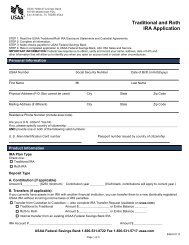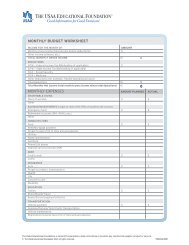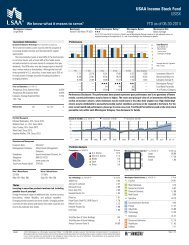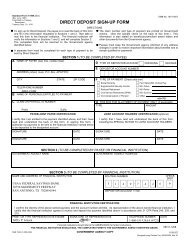SEMIANNUAL REPORT - USAA.com
SEMIANNUAL REPORT - USAA.com
SEMIANNUAL REPORT - USAA.com
You also want an ePaper? Increase the reach of your titles
YUMPU automatically turns print PDFs into web optimized ePapers that Google loves.
PRESIDENT’S<br />
MESSAGE<br />
“Because of the inverse relationship between<br />
bond prices and yields, lower prices mean<br />
investors may have the opportunity to<br />
reinvest at higher rates and potentially<br />
earn more on any new investments.”<br />
September 2013<br />
Would it or wouldn’t it? Would the U.S. Federal Reserve (the Fed) begin to<br />
reduce its bond-buying programs? Or would it continue purchasing bonds at<br />
the same pace? And if the Fed decided to taper, when would the reductions<br />
begin and how much would they be? The guessing game, which got underway<br />
in June after remarks by Fed Chairman Ben Bernanke, continued through<br />
the end of the reporting period. As I’ve discussed in the past, the Fed is<br />
supporting the economy by purchasing approximately $85 billion in<br />
mortgage-backed securities and long-term U.S. Treasury securities every<br />
month. (This is <strong>com</strong>monly known as “quantitative easing” or “QE”). In<br />
response to QE, long-term interest rates have fallen and the stock and bond<br />
markets have rallied.<br />
Most people acknowledge that QE can’t go on forever, but the idea the Fed<br />
would restrain a still fragile economy gave the markets pause. Interest rates<br />
rose sharply (bond prices, which move in the opposite direction, declined).<br />
By August, many investors had convinced themselves that the tapering<br />
announcement would be made at the Fed’s September policy meeting.<br />
Instead, the Fed backed away from its prior guidance, saying it would continue<br />
buying the same amount of bonds every month. In response, interest rates<br />
trended down slightly as the markets began to price in the risks of a fiscal<br />
impasse in Washington, D.C.<br />
During the reporting period, our <strong>USAA</strong> tax-exempt portfolios appeared to<br />
benefit from our bench of independent credit analysts. Because of their<br />
diligence, many of our mutual funds have avoided headline defaults and<br />
Chapter 9 bankruptcies such as Detroit; Jefferson County, Alabama; and<br />
Stockton, San Bernardino, Vallejo and Orange County, California. While<br />
headline events like these are likely to occur (unfunded pensions remain<br />
a long-term concern of ours), overall municipal credit quality appears to

















